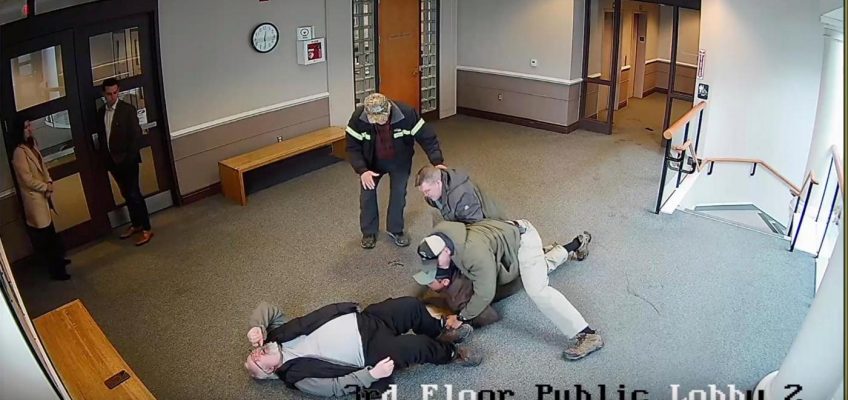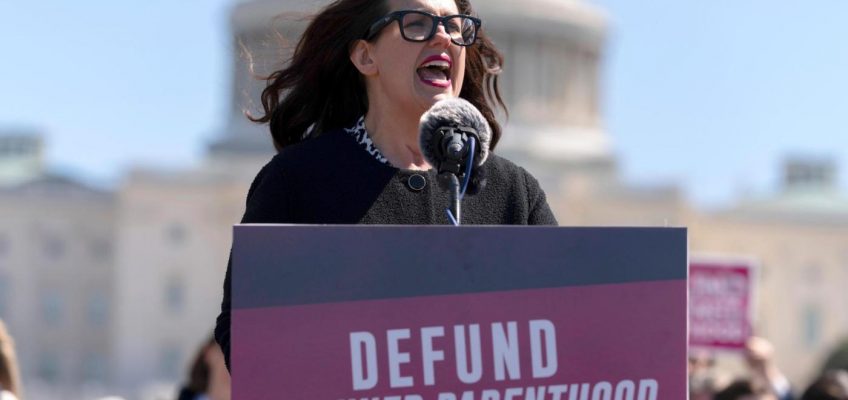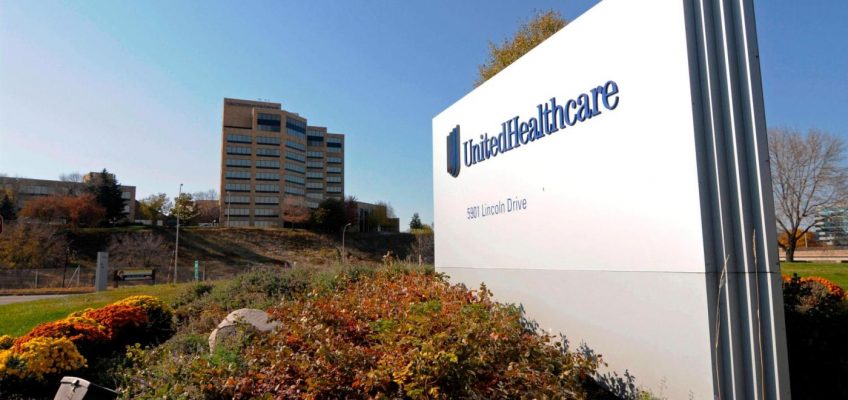By CHRISTINE FERNANDO
WASHINGTON (AP) — As Kristan Hawkins, president of the national anti-abortion group Students for Life, tours college campuses, she has grown accustomed to counterprotests from abortion rights activists.
But more recently, fellow abortion opponents, who call themselves abortion abolitionists, are showing up to her booths with signs, often screaming “baby killer” at her while she speaks with students. Hawkins has had to send alerts to donors asking them to help pay for increased security.
“I’m pretty sure they protest me more than they protest Planned Parenthood,” Hawkins said. “Believe it or not, I now know the price of a bomb dog.”
Hawkins’ encounters, which she related during an interview with The Associated Press, are just one example of what many people involved in the abortion debate have described as the widening influence of a movement that seeks to outlaw all abortions and enforce the ban with criminal prosecution of any women who have abortions. It began gaining momentum after the Supreme Court’s 2022 ruling overturning Roe v Wade and has accelerated since Republicans won full political control in Washington in last year’s elections.
The movement’s impact also is beginning to show up in statehouses around the country.
Mainstream anti-abortion groups have largely shied away from legislation that would punish women for having abortions, but abortion abolitionists believe abortion should be considered homicide and punished with the full force of the law. In many states, they have been advocating for legislation to do just that.
A split within the anti-abortion movement
Mainstream anti-abortion groups have tried to play down any divisions and instead, at various rallies this spring, have emphasized their unity behind other goals, such as defunding Planned Parenthood.
Experts say the abortion abolitionist movement, once considered fringe, is growing and getting louder, empowered by recent victories for abortion opponents.
“With the reversal of Roe v. Wade, now states can pass the most severe abortion bans, which has galvanized the anti-abortion movement as a whole, including this part of it,” said Rachel Rebouche, dean of Temple University Beasley School of Law in Philadelphia. “Certainly the fall of Roe has brought abortion abolitionists one step closer to what they want – banning abortion nationwide.”
In February, Hawkins posted on X, saying “the people I fear getting shot by, most of the time,” are not abortion rights activists but abortion abolitionists.
Then came the replies: “Demon,” “Ungodly,” “An accessory to murder,” “Enemy of God.” Her post opened a fire hose of online barbs from abortion abolitionists. Some called for her to resign and asserted that women should not have roles outside the home, let alone leading national anti-abortion groups.
Some conservative podcasts and online figures have hosted abortion abolitionists or echoed similar disdain for the larger anti-abortion movement. Ben Zeisloft, a podcaster for TheoBros, a network of Christian nationalist influencers, blamed feminism for abortion and said, “We need Christian men leading the fight against abortion.”
The comments reflect a broader uptick in misogynistic rhetoric and align with the religious doctrines motivating many in the abortion abolitionist movement, said Laura Hermer, a professor at Mitchell Hamline School of Law in St. Paul, Minnesota.
She said members of the movement have been emboldened by the overturning of Roe v. Wade, which had granted a constitutional right to abortion for half a century, and recent actions by Republican President Donald Trump.
More state bills seek to criminalize women who get abortions
Those actions include pausing some family planning grants pending investigations, pardoning anti-abortion activists who blockaded clinics and signing an executive order that uses fetal personhood language similar to verbiage in state laws declaring that a fetus should have the same legal rights as a person. The laws are supported by both abortion abolitionists and mainstream anti-abortion groups.
Trump’s rhetoric on abortion has been mixed. In 2016, he backtracked after saying there should be “some form of punishment” for women who have abortions. He has recently pledged to protect in vitro fertilization, a fertility treatment that has been threatened by fetal personhood laws.
Supreme Court appears divided over whether states can cut off Planned Parenthood funding
Supreme Court weighs whether states can cut off Medicaid funding to Planned Parenthood
Anti-abortion groups aim to end Planned Parenthood funding and suggest Musk’s DOGE to get it done
Texas medical assistant arrested in connection to clinics accused of providing illegal abortions
Texas midwife accused by state’s attorney general of providing illegal abortions
Still, several experts said many state lawmakers have taken Trump’s return to the White House as a green light to pursue more aggressive anti-abortion policies.
So far this year, bills introduced in at least 12 states – Alabama, Georgia, Idaho, Indiana, Iowa, Kansas, Kentucky, Missouri, North Dakota, Oklahoma, South Carolina and Texas – would allow prosecutors to charge those who have abortions with homicide. In some of those states, women could be subject to the death penalty if the bills were to become law.
Most of those states already ban abortions in most cases, but the restrictions have typically penalized providers, rather than those seeking the procedure.
This past week, Alabama lawmakers filed legislation that would consider abortion as murder. In Georgia last month, protesters massed at the Capitol to oppose legislation that would classify abortions from the point of fertilization as homicide. The bill had nearly two dozen Republican co-sponsors.
Nearly 8 in 10 Americans opposed laws making it a crime for women who get abortions that would result in either fines or prison time, according to a KFF poll conducted in September 2022, a few months after the Roe ruling.
Dana Sussman, senior vice president at Pregnancy Justice, which tracks this type of legislation, said she is seeing more of those bills than ever before. Sussman said it was a “remarkable increase” and a sign that the rhetoric of abortion abolitionists is having an impact. In 2022, when one such bill passed a Louisiana state House subcommittee, it sparked national outcry, she said. That’s no longer the case.
“Now, because they are normalizing this idea, what was shocking then is no longer shocking,” Sussman said.
Republican State Sen. Dusty Deevers poses for a photo Wednesday, April 9, 2025, inside the State Capitol in Oklahoma City. (AP Photo/Sean Murphy)
‘This is how change happens’
Dusty Deevers, a Republican state senator who co-sponsored the bill in Oklahoma, said he ran his campaign on a platform of abolishing abortion. He said he feels a sense of duty to his constituents and his Christian faith to pursue this type of legislation.
The bill died in Oklahoma after some local anti-abortion organizations spoke out against it. Deevers, who also has advocated against contraception, expressed frustration with mainstream anti-abortion groups.
“Politics and compromise have corrupted their mission,” he said, adding that he was encouraged that his bill received a hearing. “This is how change happens. When we’re dealing with controversial issues, change may not happen quickly … It’s not the result we wanted, but it is progress.”
The North Dakota Legislature voted down a similar bill after a staff member from the national anti-abortion group SBA Pro-Life America testified against it and read from a 2022 letter signed by more than 70 national and state anti-abortion groups that urged state lawmakers not to pass bills criminalizing women for abortions.
“We’re all trying to get to the same goal,” said North Dakota Rep. Matt Ruby. “I think there are some abolitionists who’ve forgotten that and, in their anger, are trying to tear other organizations down. But that does nothing for the movement.”
Hawkins, from Students for Life, said there are three camps within the anti-abortion movement: one that seeks to prosecute abortion patients, one that would never want to prosecute patients and one somewhere in between. The in-between group opposes prosecution now but acknowledges that this might change as “culture and laws shift.”
Hawkins said she is in the third category, while maintaining that abortion abolitionists today are not representative of the broader anti-abortion movement.
“If you want more pro-abortion Democrats to win future elections, then keep talking about putting women in jail, by all means,” Hawkins said.
The Associated Press receives support from several private foundations to enhance its explanatory coverage of elections and democracy. See more about AP’s democracy initiative here. The AP is solely responsible for all content.




